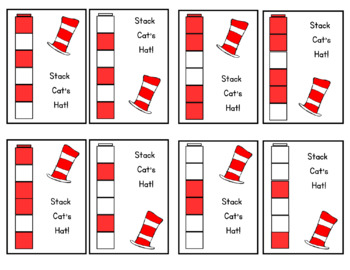Cat in the Hat Patterning
craftyteachermomma
12 Followers
Grade Levels
PreK - 2nd
Subjects
Resource Type
Standards
CCSSMP8
NGSSK-2-ETS1-2
Formats Included
- Portable Network Graphics
Pages
1 page
craftyteachermomma
12 Followers
What educators are saying
I teach a K-3 SPED classroom and we used this during Read Across America week - they just loved it and have asked to use it during 'free time' centers!
The children enjoyed making patterns with these cards and unifix cubes during our Dr. Seuss week. Thank you!
Description
Perfect to use for math center, independent work, etc. while having fun learning about Cat in the Hat! Print on cardstock and laminate for long lasting use.
Total Pages
1 page
Answer Key
N/A
Teaching Duration
N/A
Report this resource to TPT
Reported resources will be reviewed by our team. Report this resource to let us know if this resource violates TPT’s content guidelines.
Standards
to see state-specific standards (only available in the US).
CCSSMP8
Look for and express regularity in repeated reasoning. Mathematically proficient students notice if calculations are repeated, and look both for general methods and for shortcuts. Upper elementary students might notice when dividing 25 by 11 that they are repeating the same calculations over and over again, and conclude they have a repeating decimal. By paying attention to the calculation of slope as they repeatedly check whether points are on the line through (1, 2) with slope 3, middle school students might abstract the equation (𝑦 – 2)/(𝑥 – 1) = 3. Noticing the regularity in the way terms cancel when expanding (𝑥 – 1)(𝑥 + 1), (𝑥 – 1)(𝑥² + 𝑥 + 1), and (𝑥 – 1)(𝑥³ + 𝑥² + 𝑥 + 1) might lead them to the general formula for the sum of a geometric series. As they work to solve a problem, mathematically proficient students maintain oversight of the process, while attending to the details. They continually evaluate the reasonableness of their intermediate results.
NGSSK-2-ETS1-2
Develop a simple sketch, drawing, or physical model to illustrate how the shape of an object helps it function as needed to solve a given problem.


